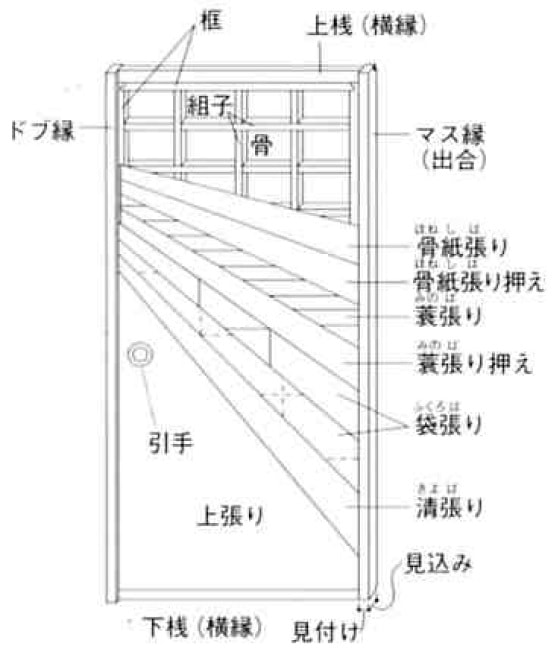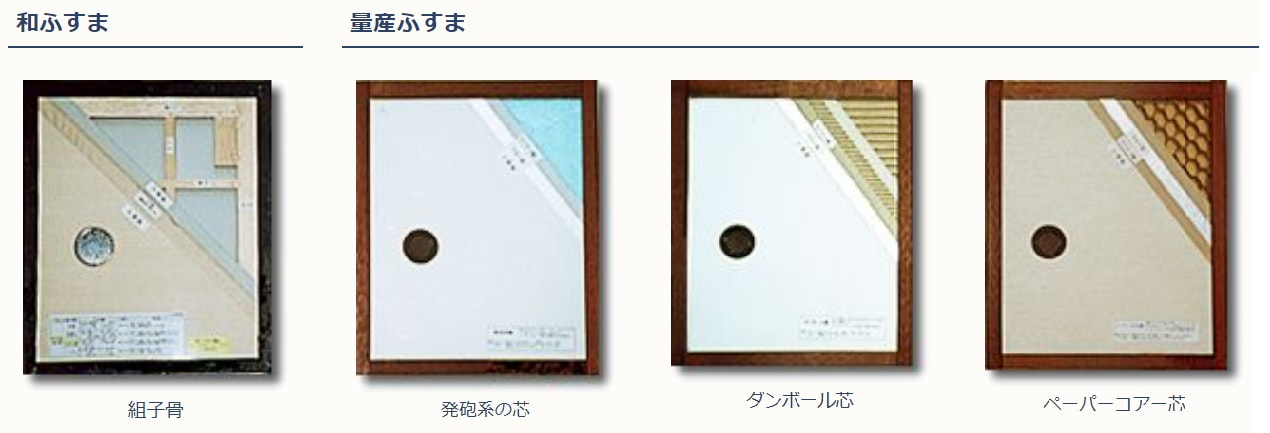|
Today, we would like to explain about the fusuma, the entrance to a Japanese-style room that you will see with almost 100% chance in the case of a Japanese house. Recently, the number of Japanese-style rooms has decreased, and the demand for fusuma is also decreasing, but this time, we will explain about fusuma such as history and types of fusuma and tips for maintenance and repair. ■ What is fusuma A fusuma is a Japanese joinery with a wooden frame, paper and cloth on both sides, and a puller attached. It is used to partition the room, to prevent cold and improve ventilation. Since it is light and removable, it also plays the role of freely adjusting the space of the room, such as making the room next to each other larger or narrower. In addition, since it also has heat retention and humidity control functions, it also has the effect of preventing cold and mildew. The reason for using fusuma to close a Japanese-style room is to protect the contents inside from moisture. It has been used since ancient times as the most suitable fitting for Japan, which has different temperatures due to seasonal changes. The beginning of fusuma is said to be in the Heian period. Houses of the Heian period are typical of the manner of the Heian era palatial architecture. It is a hall style with only circular columns lined up inside, and when partitioning the room according to the changes of the season, folding screens, screens, shoji etc. were used. Among the shoji screens, the one used in the sleeping place is called "Fusuma Shoji". It is said that its original form is a plate-shaped screen covered with silk fabric, and these were improved, and instead of silk fabric, "karakami" introduced from China came to be used and became popular. By the end of the Heian period, the sliding sliding doors had already appeared in the aristocratic residence. After that, in the Kamakura and Muromachi era of the 12th and 16th centuries, it became popular to stretch the ceiling and spread tatami mats. Fusuma pictures (tigers, phoenixes, hawks, etc.) were also drawn in the Azuchi-Momoyama and early Edo eras of the 16th and 17th centuries, and played a role in directing the strength of the samurai. In the latter half of the Edo era, it spread to the general public, and after making various improvements, a lightweight product was completed. ●Structure of Fusuma The structure of fusuma is basically unchanged from the Heian period to the present day. ●Types of Fusuma Fusuma has various contents (called groundwork).
■How to care for Fusuma
Daily maintenance is also important to keep the fusuma sliding doors clean. The sill, which is the foot of the fusuma, does not go as far as the sash, but it has some dents. It is easy for dust and dirt to accumulate. To prevent damage to the tatami mat, clean it with a vacuum cleaner or a tightly rag. In the same way, the key point is to prevent water from being sucked into the sliding doors of the fusuma. Also, since fusuma are sensitive to moisture, it is not advisable to hang wet clothes or wipe them with water. It may cause stains and spots. If the sill becomes slippery, apply a silicone lubricant (liquid) or tree wax. ●The service life of fusuma is around 10 years Fusuma and fusuma paper will reach the end of their lives even if they are not opened and closed every day. There are some differences depending on the environment, such as the sun and changes in temperature and humidity, but it is said that the standard for refilling is around 10 years. ●How to make fusuma last longer If you want the fusuma to last as long as possible, the point is to let the moisture absorbed by the fusuma paper well diffuse. Ventilate the room as often as possible without touching the sliding doors with clothes and towels that cause moisture. On humid days, keep the fusuma open to prevent mold formation. However, it is not good to leave it open for many days, as it will warp if it overlaps and only one side will deteriorate due to sunburn etc. ●Timing of replacing the fusuma paper The fusuma will come close to the original beautiful fusuma when the fusuma paper on the surface is replaced. The timing of replacement is; Ceremonial occasions (funerals, ceremonies, weddings, etc.) Visitors/Lodgers Year-end and New Year holidays (year-end general cleaning, New Year) It seems that it was held according to such events, but as a sign of; Large stains (yellow, brown, etc.) Moldy The color is changing There is slack or wrinkles 10 years have passed since the last replacement The above is mentioned. In such cases, you will have to ask the vendor or put it up yourself. You can do the DIY replacement yourself, so please give it a try. Comments are closed.
|
Details
AuthorArrows International Realty Corp. Archives
June 2023
Categories
All
|


 RSS Feed
RSS Feed